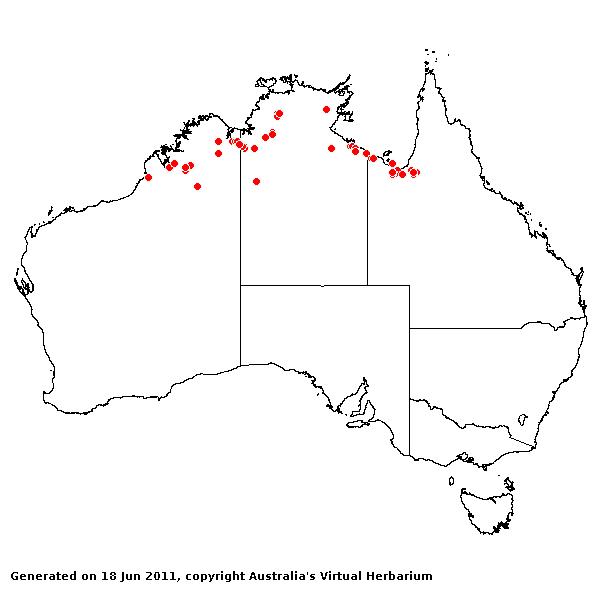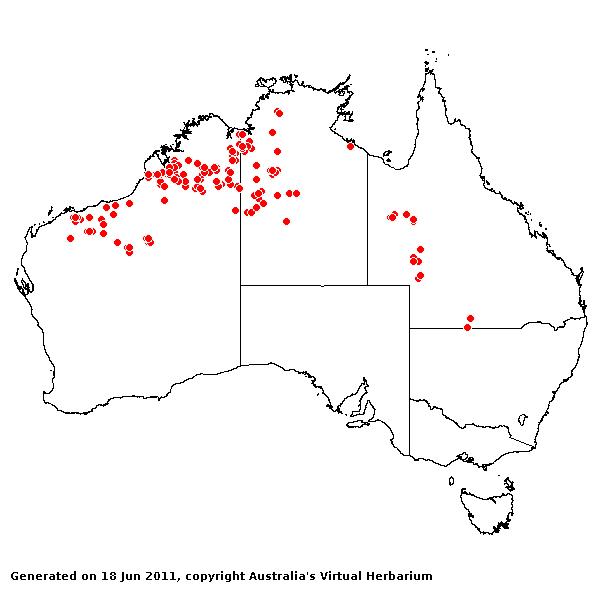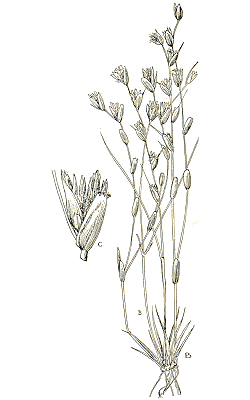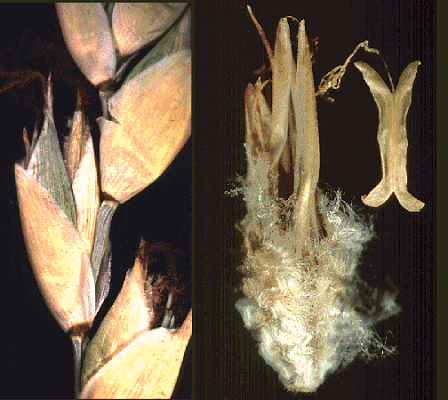Xerochloa barbata R.Br. Prodr. 197 (1810). Classification. (GPWG 2001) : Subfamily Panicoideae. Paniceae.
Common name: Rice Grass.
Type of Basionym or Protologue Information: Australia: R. Brown 6144 (K iso).
Recent synonyms: Xerochloa laniflora.
Key references (books and floras): [1810]. R.Brown, Prodromus (197), [1878] G.Bentham, Flora Australiensis 7 (501), [1952] C.A.Gardner, Flora of Western Australia 1 Gramineae (295), [2002] D.Sharp & B.K.Simon, AusGrass, Grasses of Australia.
Illustrations: [1952] C.A.Gardner, Flora of Western Australia 1 Gramineae (291, Pl.85 & 292, Pl.86).
Derivation: Latin for beardless. Glumes and/or lemmas glabrous.
Habit. Annual or perennial. Stolons present. Culms erect or geniculately ascending or decumbent, 12–50 cm tall, 2–5 -noded. Mid-culm internodes hollow or solid or spongy. Mid-culm nodes glabrous. Ligule a fringe of hairs, 0.3–1.8 mm long. Leaf-blades filiform or linear, flat or involute, 4–22 cm long, 1–3.5 mm wide. Leaf-blade surface smooth.
Inflorescence. Inflorescence compound, a panicle of spikes. Panicle 6–12 cm long. Rhachis wrinkled & tuberculate, villous on surface or woolly on surface, terminating in a barren extension, extension flattened or subulate.
Spikelets. Spikelets sessile. Fertile spikelets 2-flowered, the lower floret barren (rarely male), the upper fertile, comprising 1 basal sterile florets, comprising 1 fertile floret(s), without rachilla extension, lanceolate to ovate, dorsally compressed, 4.8–10 mm long.
Glumes. Glumes dissimilar, thinner than fertile lemma. Lower glume linear to ovate, hyaline or membranous, without keels, 0–1 -nerved. Lower glume surface glabrous or indumented. Upper glume lanceolate, 2.1–9 mm long, hyaline or membranous or scarious, without keels, 0–5 -nerved. Upper glume surface glabrous or indumented. Florets. Basal sterile florets 1, male, with palea. Lemma of lower sterile floret 100 % of length of spikelet, membranous or chartaceous or cartilaginous or indurate, 3–7 -nerved.
Fertile lemma 4–10 mm long, without keel, 3 -nerved. Palea 2 -nerved, without keels. Anthers 3.
Continental Distribution: Australasia.
Australian Distribution: Western Australia, Northern Territory, Queensland.
Western Australia: Gardner, Fitzgerald, Dampier. Canning, Fortescue. Northern Territory: Darwin & Gulf, Victoria River, Barkly Tableland, Central Australia North. Queensland: Burke, Gregory North, Warrego.
Flora of Australia Notes. The densely woolly rachis clearly distinguishes it from X. imberbis.
Inhabits the saline tidal flats of the Kimberley, Arnhem and Carpentaria regions.In tropical and subtropical sub-humid woodlands and coastal grasslands. Flowers Feb.-June.


X. barbata s.s X. laniflora

 X. laniflora
X. laniflora



